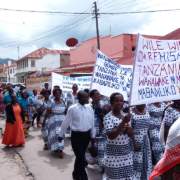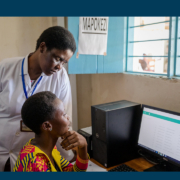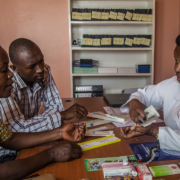Intersectionality: How do we stay true to the content behind the concept?
Written by: Danette Wilkins, Program Officer, Breakthrough ACTION, Johns Hopkins Center for Communication Programs
Talk about intersectionality has grown in recent years, across the U.S. and beyond. As this concept increasingly goes mainstream, I often wonder how folks understand its meaning and interpret its application.
This month’s Trending Topic: Gender and Intersectionality reminds us that this concept was first coined in 1989 by American lawyer, civil rights advocate, philosopher, and scholar Kimberlé Crenshaw as a way to describe how race, class, gender, and other social identities intersect and overlap. It emerges from Crenshaw’s immersion in critical race theory and its application to her analysis of three U.S. legal cases involving racial discrimination and sex discrimination. She published her analysis in a paper titled, “Demarginalizing the Intersection of Race and Sex: A Black Feminist Critique of Antidiscrimination Doctrine, Feminist Theory and Antiracist Politics” (1989). In this paper, Crenshaw argues that in all three cases the court narrowly defined discrimination and failed to recognize that an individual can simultaneously experience multiple forms of discrimination according to their combination of social identities. In this particular case, she asserts that Black women can experience both racism and sexism and that they also uniquely experience these forms of discrimination as Black women in the U.S. context. That is, they experience racism differently from Black men and they experience sexism differently from white and brown women, while also experiencing both at the same time. As Crenshaw writes in her 1989 article, “Because the intersectional experience is greater than the sum of racism and sexism, any analysis that does not take intersectionality into account cannot sufficiently address the particular manner in which Black women are subordinated.”
Is intersectionality complicated? It certainly is, especially when adding more social identities, such as religion, nationality, and sexuality, to the mix. And that’s precisely why Crenshaw’s contribution is so significant. Its complexity-aware, socially conscious lens gives us a way to observe and analyze power imbalances to then be able to do something about them. Doing something entails transforming power dynamics and social systems and structures, and the field of social and behavior change (SBC) is uniquely positioned to do this work by harnessing the strengths of its approaches, strategies, and tools. As you read this month’s Trending Topic with its focus on how intersectionality relates to SBC, I encourage all of us to apply this lens to ourselves and our work to be able to transform power dynamics and social systems and structures and improve health and social outcomes for all.

 MONUSCO Myriam Asmani
MONUSCO Myriam Asmani Sarah Hoibak/VectorWorks/Photoshare
Sarah Hoibak/VectorWorks/Photoshare Rebekah Munnikhuysen/US Peace Corps/Photoshare
Rebekah Munnikhuysen/US Peace Corps/Photoshare Rachel Chilton/USAID/Flickr
Rachel Chilton/USAID/Flickr Yagazie Emezi/Getty Images/Images of Empowerment
Yagazie Emezi/Getty Images/Images of Empowerment USAID/Flickr
USAID/Flickr Breakthrough ACTION-Nigeria
Breakthrough ACTION-Nigeria